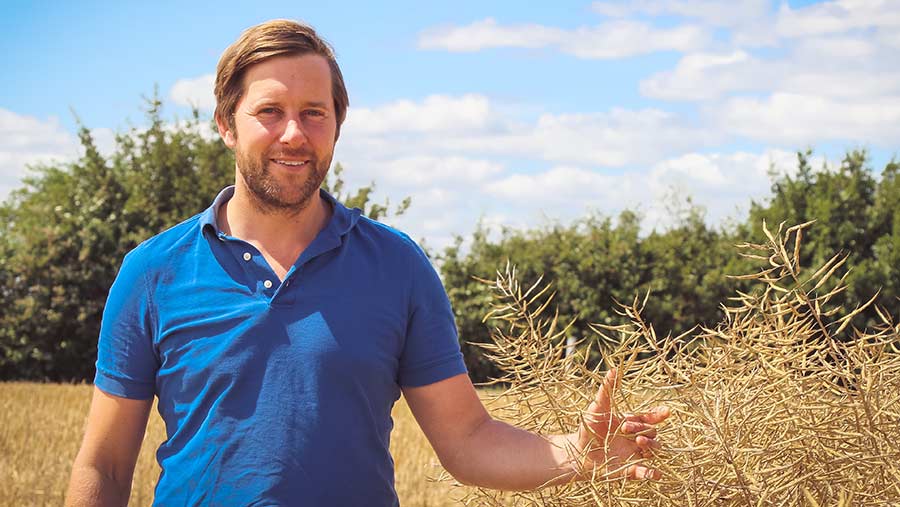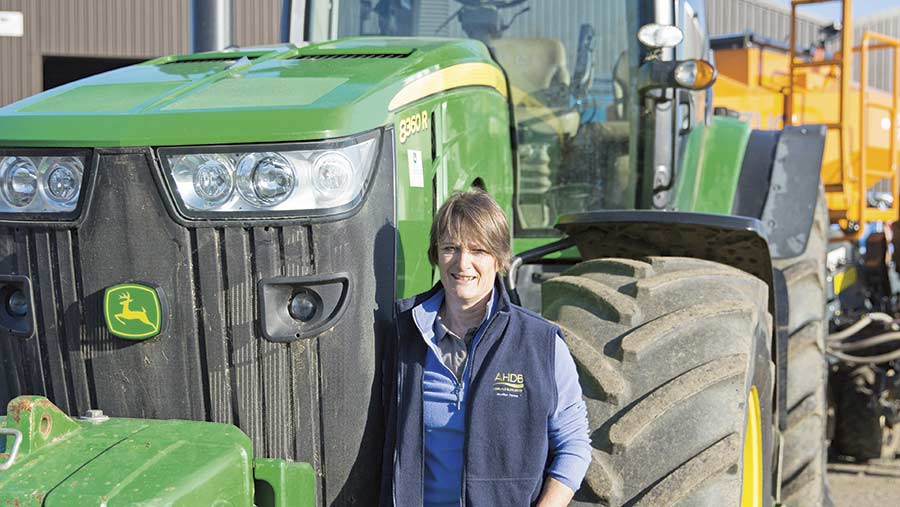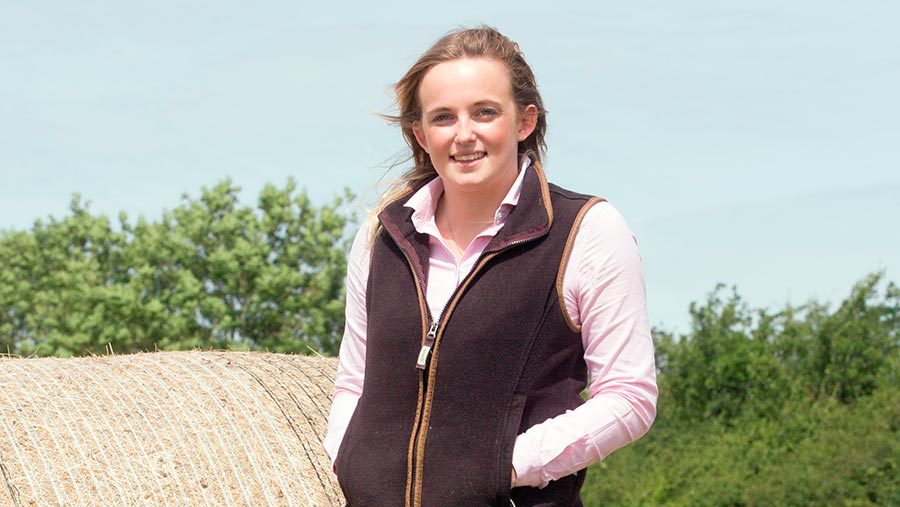4 farmers test new techniques through on-farm trials
Making changes to farming practice based entirely on the results of a farmer open day can be a daunting prospect for growers.
The only way to ensure new techniques will not have a disastrous effect on yields when put into effect back on home soil is to conduct your own trials.
We speak to four growers who have decided to do just that this season.
1. Simon Beddows, Oxfordshire
Oxfordshire farmer Simon Beddows has been doing on-farm trials for 20 years as he would rather prove something himself than rely on information from manufacturers.
His current focus is on using variable rates to deal with the highly differing soils and topography across his farm.

Simon Beddows ©Tim Scrivener
Soils range from gravel to clay, with three or four changes in type possible in just one field.
This season he is building on a previous variable growth regulator trail by varying all his inputs – seed rates, T0, T1, T2, T3 sprays and growth regulator. Only herbicides will be kept consistent.
- Simon Beddows manages 1,000ha of arable land at Dunsden Green, south Oxfordshire.
- Cropping is cereals, oilseed rape, beans and forage maize
The aim of the trail is not to cut input costs, but to apply inputs in a more targeted way to achieve better yields.
Mr Beddows says a constant rate of growth regulator was damaging thinner areas of crop on banks, while failing to adequately cover thicker areas in hollows.
He varied his application by 20% either side of the standard 100l/ha across farm standard strips, based on satellite mapping provided to him by Soyl after he had proved the concept and machinery worked on a smaller scale.
“Where we varied the T0 we saw a 0.4t uplift,” he says. “The best effect was on the banks where we had been stunting growth.”
“It’s just a proof of concept again this year in one field. Next year I will ask Soyl to help do a direct comparison,” he says.
“Proving the concept is an important step. If you try to do something totally new and the technology doesn’t work, it screws the whole thing up.”
2. Tom Martin, Cambridgeshire
Cambridgeshire farmer Tom Martin has heard good things about the disease resistance of blending wheat varieties, so he is testing it out on a crop of winter wheat grown for industrial feed.
“I heard from our agronomist at Farmacy about another grower who has been mixing wheat varieties for some years,” says Mr Martin.

Tom Martin
The different characteristics of the wheats make it difficult for viruses to easily spread, but as Mr Martin farms on very heavy clay, what works for another grower won’t necessarily work for him.
- Tom Martin farms on his family’s mixed farm in Haddon, Cambridgeshire
- Cropping is mainly wheat with linseed, spring barley and oilseed rape, and some grass-fed sheep
In the last blackgrass-free field drilled this year, he put a mix of varieties, including Diego, Revelation, Crusoe and Ziat.
He might continue with the same agronomy he would have normally used, or could choose to reduce fungicide application on a small section of the field to highlight the effect of the increased resistance.
“Some days I think: let’s just take the increased efficiency, but I change day by day. I will consult with my agronomist and maybe reduce across a couple of tramlines.”
Mr Martin plans to introduce new varieties into the mix every couple of years to help keep resistance high, as he believes homogenisation of the varieties over time will affect the level of disease resistance.
“I want to examine all the options, and this was something that was interesting to me without being risky in terms of yield,” he says.
“I think you should find some science you are convinced by and really go for it.”
3. Christy Willett, Essex
Christy Willett has already moved to strip-till on her land at Parkland Farm, Essex, after oilseed rape and beans.
Although she is happy with the concept using her Mzuri drill, Ms Willett is interested in refining the idea further.

Christy Willett © Stacey England
This could be by using a different drill, or potentially adding a disk drill to her existing Mzuri.
- Christy Willett farms 475ha with her son Hew at Parklands Farm in Galleywood, Essex
- A rotation of two wheats followed by spring beans or oilseed rape is typical on the mix of owned and rented land, but also includes some spring barley and spring oats
Becoming an AHDB Monitor Farm has given Ms Willett the opportunity to find out which option is best by holding a drill try-out on her farm.
“Becoming a Monitor Farm is something that really appealed to us. Having seven drills on the farm in seven days would be tough to arrange logistically on your own,” she says.
Two of Ms Willett’s neighbours were also keen to get involved and provided a CrossSlot drill and a Weaving GD600T for the test.
Understandably, it has proved a great draw for farmers, who would struggle to undertake such a trial themselves.
“From a farmer perspective it is really interesting to get all the drills in one field and see how they cope,” Ms Willett adds.
Each of the seven drills drilled half-a-tonne of Crusoe winter wheat at 200kg/ha across a comparable area.
Ms Willett says the results have been very interesting. “The drills essentially do the same thing, but they do it all so differently,” she says.
With rolling abandoned after poor weather at the start of drilling, slug damage and poor emergence have been issues.
The Sky Agriculture Easy Drill achieved by far the best emergence rate of 81%, despite being one of the cheaper drills on test.
“It has a good, firm roll on the machine – that is why it was so successful. I had no idea that was a feature of the drill,” says Ms Willett.
4. Helen Brown, Cumbria
The unique climate in the North West, where student agronomist Helen Brown’s mixed family farm is located, has been the basis for two trials.
The Cumbrian farm is acting as one of Hutchinsons’ regional technology centres, and Ms Brown is also carrying out a research trial on herbicides as part of her trainee scheme for the company.

Helen Brown © Tim Scrivener
“We have a localised climate in the North West with high rainfall. Trails carried out nearby rely on data from the North East, where the climate is different. Even trails in the West are further west,” she says.
- Helen Brown is running trials at her family’s mixed farm in Kirkbampton Cumbria
Wet weather was the determining factor in determining whether a pre- or post-emergence herbicide would be more effective in battling the local problem of annual meadowgrass.
“Annual meadowgrass holds moisture in the bottom of the crop, which delays harvesting. This is something we particularly don’t want in Cumbria, as we already have a lot of wet weather to compete with getting crops dry and also harvesting chances can be few and far between,” says Ms Brown.
She drilled a winter hybrid barley on 27 September and put a pre-emergence on the next day.
Non-stop rain until mid-October meant Ms Brown couldn’t get on to do the post-emergence until 27 October, reducing its effectiveness to 90% in comparison with the 99% effectiveness of the pre-emergence.
She has also drilled 27 wheat varieties and 17 barley varieties for the Hutchinson RTC trial, and will also drill 10 spring barleys next year.
“We have different disease pressures here in Cumbria, with septoria a problem in wheat and rhynco in barley.
“The trial will be open in June 2018 for local growers to come and visit – hopefully they will get plenty from seeing the [fungicide] untreated and treated variety plots for future variety choice.”
Top tips for successful on-farm trials
- Don’t try to do too many trials at the same time
- Carry out the trial over one or two tramlines
- Trials need to be carried out on a variety of fields over a number of seasons to get a result that can be trusted
- Don’t be afraid to try something new and completely different

